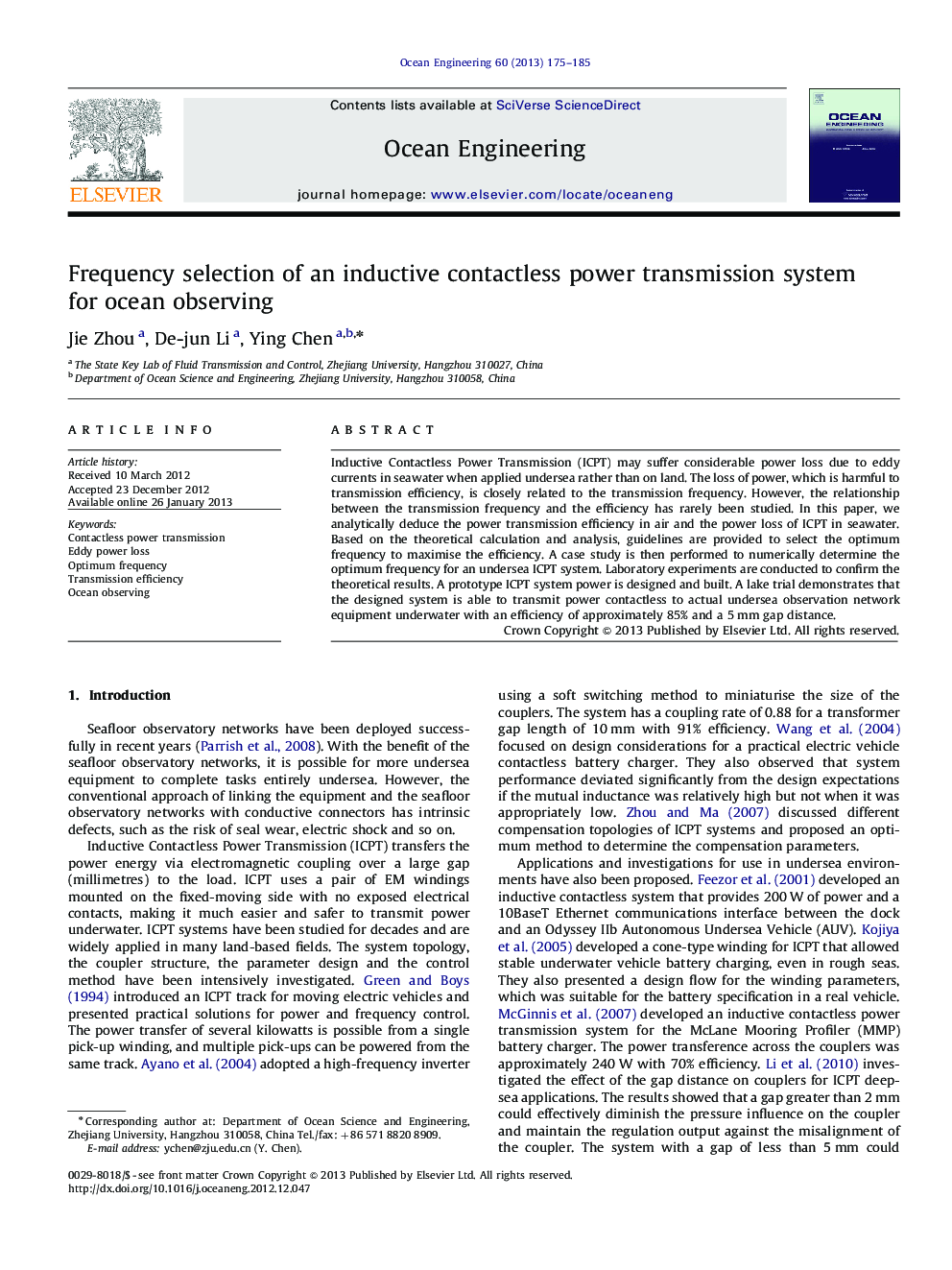| Article ID | Journal | Published Year | Pages | File Type |
|---|---|---|---|---|
| 1726020 | Ocean Engineering | 2013 | 11 Pages |
Inductive Contactless Power Transmission (ICPT) may suffer considerable power loss due to eddy currents in seawater when applied undersea rather than on land. The loss of power, which is harmful to transmission efficiency, is closely related to the transmission frequency. However, the relationship between the transmission frequency and the efficiency has rarely been studied. In this paper, we analytically deduce the power transmission efficiency in air and the power loss of ICPT in seawater. Based on the theoretical calculation and analysis, guidelines are provided to select the optimum frequency to maximise the efficiency. A case study is then performed to numerically determine the optimum frequency for an undersea ICPT system. Laboratory experiments are conducted to confirm the theoretical results. A prototype ICPT system power is designed and built. A lake trial demonstrates that the designed system is able to transmit power contactless to actual undersea observation network equipment underwater with an efficiency of approximately 85% and a 5 mm gap distance.
► We model inductive the contactless power transmission efficiency in air and seawater. ► Guidelines are given to frequency selection for maximising efficiency. ► Seawater brought two harmful impacts to ICPT. ► A lake trial of designed prototype of ICPT was conducted successfully.
